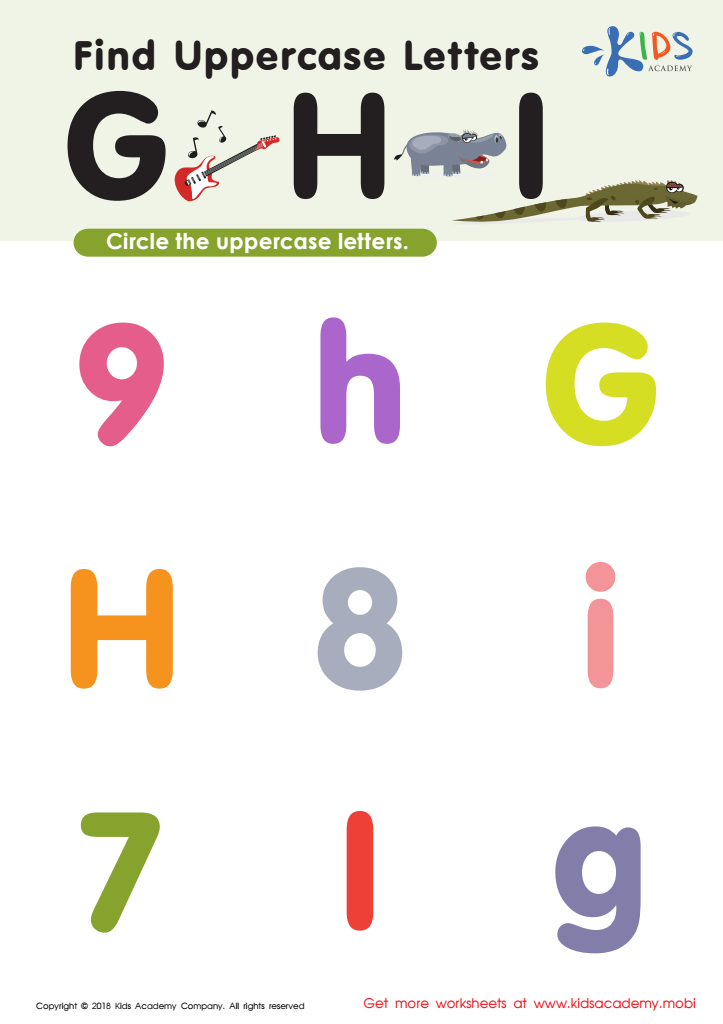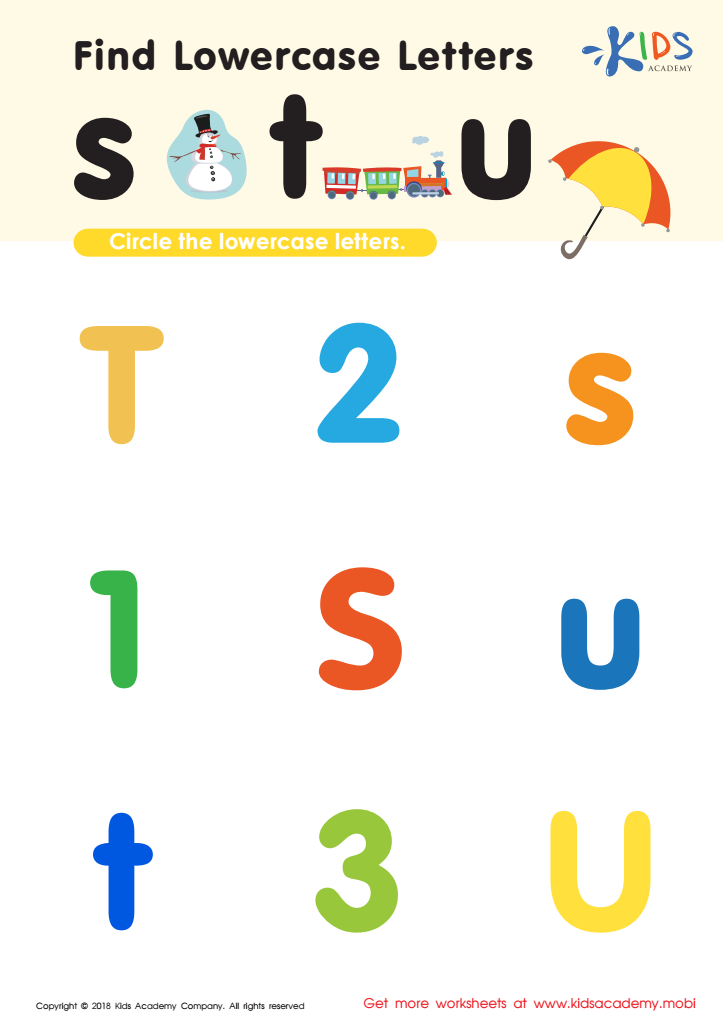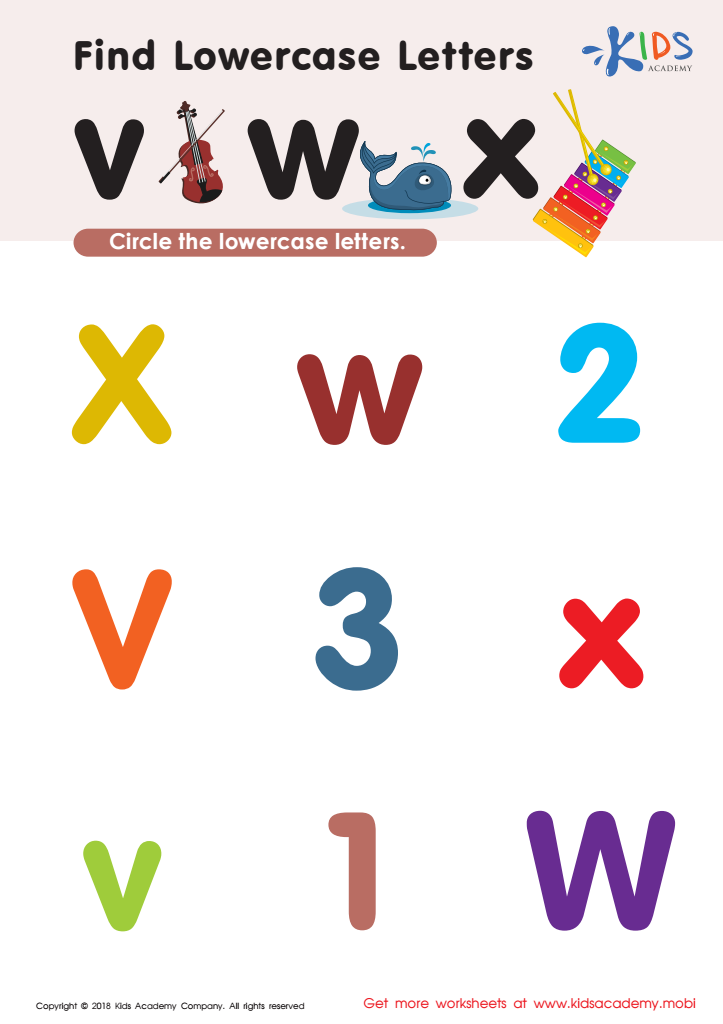Alphabet familiarity Normal Upper & Lowercase Letters Worksheets for 6-Year-Olds
6 filtered results
-
From - To
Introduce your child to the exciting world of letters with our "Alphabet Familiarity: Normal Upper & Lowercase Letters Worksheets" tailored for 6-year-olds. These engaging, educational worksheets are expertly designed to help young learners recognize, write, and differentiate between upper and lowercase letters. With fun activities and colorful illustrations, children will build essential literacy skills while enjoying their learning journey. Ideal for home or classroom use, our carefully crafted worksheets support early reading development and boost kids' confidence in alphabet mastery. Kickstart your child's literacy success today with our comprehensive alphabet familiarity worksheets.


Find Uppercase Letters G, H, and I Worksheet


Find Uppercase Letters Worksheet


Find Uppercase Letters J, K, and L Worksheet


Find lowercase Letters s t u Worksheet


Find Uppercase Letters A, B, and C Worksheet


Find Lowercase Letters v w x Worksheet
Alphabet familiarity, including normal upper and lowercase letters, is fundamental for 6-year-olds and should be a priority for parents and teachers. At this developmental stage, children are typically transitioning from pre-reading to reading. Recognizing both upper and lowercase letters not only forms the basis of literacy but also greatly impacts a child's ability to comprehend and communicate effectively.
Firstly, understanding the alphabet is integral to phonemic awareness, where each letter corresponds with a specific sound, aiding in word formation and pronunciation. This sets the stage for successful reading and writing. Early mastery of these skills can lead to higher academic achievements and a more positive attitude towards learning.
Secondly, familiarizing children with both upper and lowercase letters enhances their writing skills. Many words begin with an uppercase letter followed by lowercase letters, particularly names and sentences. Proper letter recognition ensures that children can write accurately, fostering better expression of their ideas.
Lastly, being fluent in recognizing both cases of letters reduces confusion and bolsters confidence. This confidence is crucial for participating in classroom activities and homework, promoting a sense of achievement.
In sum, nurturing alphabet familiarity in 6-year-olds builds a strong educational foundation, paving the way for academic success and lifelong learning skills.
 Assign to My Students
Assign to My Students












